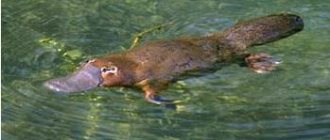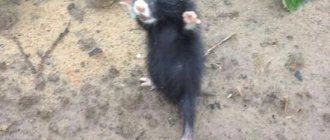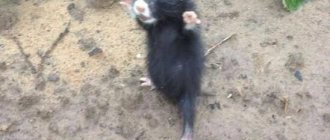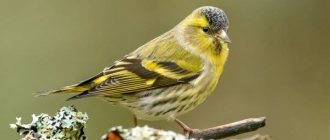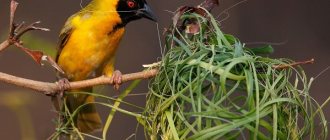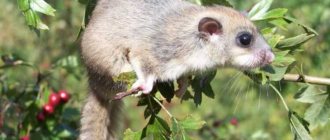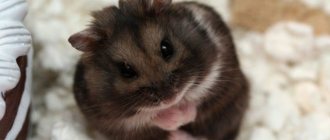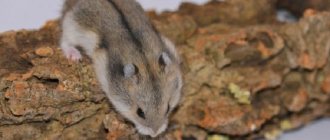- October 27, 2018
- Miscellaneous
- Michael
Not every summer resident has encountered karbysh. But those who have such misfortune will not soon forget about such contact. After all, a couple of these pests, finding themselves in a large area, may well leave a summer resident without the harvest he worked on all summer. Therefore, you have to fight the little carbysh animal, the photo of which is attached to the article, as decisively as possible, without the slightest compromise. Otherwise, instead of a rich harvest in the fall, you will get, at best, a mountain of cores.
Background information about animals of the species - rodents: habitat, size, appearance of animals
Brazilian pigs are distributed throughout almost all of South America (with the exception of Colombia and Venezuela, the Amazonian lowland and the extreme south of the continent).
dry steppes and semi-deserts of the south of Western Siberia, Eastern Kazakhstan, Khakassia
mountain steppes of Tuva, Sayan and South-Western Transbaikalia
in Primorye, Korea and China
Canada (Alberta, British Columbia, Labrador, Manitoba, New Brunswick, Northwest Territories, Nova Scotia, Nunavut, Ontario, Prince Edward I, Quebec, Saskatchewan, Yukon), Mexico, USA.
Prairie dogs live on the prairies of North America. The habitat is dry land covered with short to medium-length grass.
Found in abundance in the dry, barren plains of Patagonia.
The species is distributed in the Himalayas from Bangladesh, Myanmar, Thailand, Laos to northern Vietnam.
The third most common species of rat in the world. The small rat presumably spread from the territory of what is now Indonesia (Halmahera) along with the Lapita culture and reached Micronesia, Fiji, and Vanuatu. This species of rat appeared in New Zealand ca. 1280 along with Maori settlers. Currently distributed throughout Southeast Asia and Oceania, where it is also kept as a pet and used for food.
Due to the fact that this species is in danger of extinction, a program to save it is being implemented. At the same time, so that they do not disappear completely, this type of mouse is prohibited from being exported outside of Turkey (without appropriate government permission) and only in a few zoos in the world can representatives of this species be found (Prague and Helsinki Zoos). It is noted that in captivity these mice reproduce and live for about 4 years. In addition, this species is cultivated as a pet in England, Germany and Denmark.
The range covers the territory of the following countries: Georgia, Greece (islands of the eastern Aegean Sea, Crete) Iraq, Israel, Jordan, Lebanon, Palestine, Serbia, Syria, Turkey.
Distributed in desert steppes, semi-deserts and deserts of Eurasia and North Africa
Found in a variety of habitats in the United States and Canada.
The lesser mole rat lives in Southeast Europe, Asia Minor and Libya.
The small gopher is common in the flat and low-mountain steppes and semi-deserts of the Dnieper, Ciscaucasia, Lower Volga region, east to the Betpak-Dala desert. In the west, the small gopher is not found further than the Dnieper. The northern border of the range runs from the lower reaches of the Dnieper along the Vorskla and Kolomak rivers, and along the Seversky Donets it drops to 49° N. latitude. (town of Izyum), crosses the Don, turns northeast and reaches the Volga near the town of Engels. Along the left bank of the Volga, the border rises to 53° N, turns to the southeast, along the bank of the Samara River it reaches the Ural River, the left bank of which again reaches 53° N. (Troitsk). Then the border enters Kazakhstan: it turns to the southeast, goes to Astana, and from there to Lake Zaysan. The southern border of the range from the Dnieper runs along the coast of the Black (including Crimea) and Azov Seas, the North Caucasus steppes, the northern coast of the Caspian Sea, from there it goes along the Ustyurt plateau along 44° N, goes around the Aral Sea from the north and descends along the Syr Darya to the lower reaches of the Sarysu .
Countries of distribution: Afghanistan, Armenia, Azerbaijan, China, Georgia, Iran, Kazakhstan, Kyrgyzstan, Mongolia, Pakistan, Russian Federation, Tajikistan, Turkey, Turkmenistan, Uzbekistan. Inhabits desert and semi-desert regions. Avoids open spaces and dense vegetation. This species is found in some degraded habitats and along the outskirts of agricultural areas.
These rodents are distributed from southwestern North America through Mexico and Central America, reaching northwestern South America. Most species are associated with desert and semi-desert landscapes, overgrown with sparse grass and shrub vegetation, with sandy, clayey and gravelly soils.
The species lives in northeastern Brazil in rocky landscapes in the states of Minas Gerais, Bahia and Piaui.
Flora of St. Petersburg
St. Petersburg is located at the southernmost tip of the taiga zone. Many thousands of years ago, a huge sea lay imposingly here, lazily rolling its blue waves under the influence of the wind. Then this area was covered by a glacier, which, crawling away, took with it the sea plain. All that was left of the sea was the Neva, a river in whose delta a huge number of islands formed. It was on them that Tsar Peter erected the first buildings of the future city. The swamps were urgently drained, and piles were pre-installed for the construction of many buildings. The piles were made from larch, which is known for the fact that it does not rot in water, and over time it becomes harder than stone.
Already 4 thousand years ago, the taiga encroached on these places. Its firs, spruces and pines approached the Gulf of Finland in a dense ring, interspersed only in the very south with tall bushes. Therefore, the flora of the city is presented in a very unique way. In the northern regions of the city, centuries-old pines and spruces still flourish, and in the south, ordinary people collect blueberries, lingonberries and sorrel.
Now St. Petersburg can be called one of the greenest cities in Russia. Vegetation covers up to 40% of the city's total area. Meticulous statisticians have calculated that until recently there was up to 65 sq.m. per St. Petersburg resident. green spaces. And no wonder, because the city has 68 parks, more than 150 gardens, over 700 public gardens and about 200 boulevards.
Natural forest vegetation has been preserved in many parks and gardens of the city: in Piskarevka, Sosnovka, near the Technical University and the Forestry Academy.
The vegetation of St. Petersburg is best represented in its parks. So in Central Park. S. Kirov, that on Elagin Island you can see 200-year-old oaks and elms, maples and birches, which coexist peacefully with centuries-old pines and firs. This is the northernmost park of the city, which very clearly demonstrates the proximity of taiga and deciduous forests.
The Summer Garden is the favorite brainchild of Peter I, who became one of the first parks in the capital of the empire, laid out according to all the rules of horticultural art. Over the centuries, the appearance of the garden has changed several times, but even now it remains one of the most visited parks in the city, where you can admire spreading linden and maple trees, numerous shrubs and a beautiful lawn.
Sosnovka Park, in the Vyborg region, is famous for its mighty pine trees. And Yuzhno-Primorsky Park, located in the Krasnoselsky district, delights visitors with slender chestnuts, weeping willows, mighty oaks and beautiful fir trees.
Rodents of Bashkiria photo
RODENTS (Rodentia), rep. mammals. More than 40 families, 2500 species are known. In the Republic of Belarus there are 32 species from 8 families. (beavers, squirrels, flying squirrels, mice, mice, dormouse, jerboas, hamsters). Dl. bodies from 6 (mouse mice) to 100 cm (river beaver), weight from 6 g to 30 kg. The coat color ranges from light gray to black, sometimes motley. The hair is usually short, thick, and silky. There are skin glands and sweat glands on the soles. The eyes range from very large (common flying squirrel) to rudimentary, hidden under the skin (mole rats). The lips are mobile, forked in front, the mustache is long; at pl. G. there are cheek pouches that serve temporarily. food storage. The bony palate is in the form of a wide plate. The front teeth are incisors, located one pair per top. and lower jaws, large, without roots, self-sharpening when abraded, growing constantly. There are no fangs, there is a large gap between the incisors and molars - a diastema. Molars with a wide chew. surface, in some G. grow constantly. The rubbing surface of molars has lumpy ridges or flat folds, the edges of which also self-sharpen. The neck is thick, short, the body is cylindrical, the limbs are short, with claws; in species that move by jumping (jerboas), the hind limbs are very long; among burrowers, G. (tsokors) have large claws; in species capable of gliding flight (common flying squirrel), with bones supporting the lateral leathery fold. Polygamy. Sexual maturity in large animals (beaver, marmot, etc.) occurs in the 2nd year of life, and in small animals (mice, voles, etc.) at 2–3 months. G. is characterized by high fertility: mice and voles give birth to 8–14 cubs 6–8 times a year; the river beaver and marmot give birth to up to 6 cubs once a year. Large G. live 4-7 years, small ones - 1.5-2 years. Marmots and gophers hibernate in winter. Most G. are herbivores, some omnivores, and insectivores. Many G. lead a semi-subterranean lifestyle in burrows they dig, often deep and complex; feed on the surface. Prem. terrestrial (mice, rats), semi-aquatic (beaver, common shrew, muskrat) and arboreal (common squirrel, dormouse) species. Distributed throughout the territory. RB. Squirrel and muskrat are objects of the fur trade; white rats and mice are bred as laboratory animals. G. serve as food for birds of prey (golden eagle, imperial eagle, etc.) and mammals (weasel, foxes, etc.). Most G. are pests of agricultural and forest crops, barn pests, and a source of infection of humans and domestic animals with helminths. G. are a reservoir of pathogens of rabies, leptospirosis, swine erysipelas, tularemia, human plague, etc. As a mechanical G. carriers contribute to the spread of a large number of infectious diseases and parasitic diseases of women. Being feeders of ectoparasites, G. create the prerequisites for the emergence and maintenance of natural foci of diseases (brucellosis, listeriosis, toxoplasmosis, etc.). The common flying squirrel, garden dormouse, common marmot, and great jerboa are listed in the Red Book of the Republic of Belarus.
Karbysh animal: photo, description, habitat, harm and control methods
- October 27, 2018
- Miscellaneous
- Michael
Not every summer resident has encountered karbysh. But those who have such misfortune will not soon forget about such contact. After all, a couple of these pests, finding themselves in a large area, may well leave a summer resident without the harvest he worked on all summer. Therefore, you have to fight the little carbysh animal, the photo of which is attached to the article, as decisively as possible, without the slightest compromise. Otherwise, instead of a rich harvest in the fall, you will get, at best, a mountain of cores.
Karbyshi in the garden plot
The hamster causes great damage to garden plots. His activity in the garden begins during the seedling period. At this time, the karbysh (animal) cuts off the sprouts of cabbage, pumpkin, cucumber, carrot, and onion seedlings as if with scissors.
In the summer, the animal destroys the fruits of zucchini, carrots, pumpkins, and beets. The rodent loves onions and garlic. Doesn’t refuse squash and potatoes. Gnawing out tubers and roots from plants. At this time, the pest not only destroys crops, but also stores potatoes, carrots, and seeds for the winter.
Karbysh is very voracious, and it causes significant damage in the garden. Whatever he can't eat, he takes away with him. Gardeners are forced to constantly fight it.
Appearance
First of all, it is worth noting that this animal belongs to hamsters, being a representative of a rather harmful family. As you can see in the photo, the carbysh animal really looks like other rodents of this species.
- Its color is quite bright, even beautiful.
- The back is yellowish-brown, the belly is black, and the sides are decorated with large white spots. At the same time, the coat is short, but thick and pleasant to the touch, very soft.
- The ears are quite massive and stand out sharply on a neat head.
- The paws are quite wide with thin, sharp claws, which allows the carbysh to dig deep holes in which it will live, store supplies for the winter and raise offspring.
The karbysh is one of the largest hamsters - its weight can reach 750 grams! At the same time, the body is quite dense, compact, up to 35 centimeters long.
What does a wild hamster look like?
A wild hamster is not a small animal. The male carbysh grows up to 40 cm in length, in females this parameter reaches up to 25–30 cm. The tail is thick, tapered at the end, from 3 to 8 cm long. Weight is about 700 g.
Vasily returned from hunting with decent booty. Today he has a wild field hamster for dinner. A visual photo showing the size of the carbysh.
Compare with a domestic hamster, which will grow a maximum of 10-15 cm. Wild carbysh is more similar in size to a guinea pig.
Karbysh is a frequent visitor to summer cottages and vegetable gardens, so you need to know what a wild hamster looks like so as not to give up when meeting one. The animal's neck is not visible. His head with large cheeks and lush fur flows smoothly into the body. The legs are short but muscular. The claws are hard and very sharp; this is its main tool for breaking through passages and holes. Sharp teeth grow constantly, like the rest of the hamster family. That's why they constantly chew on something and wear down their teeth. The mustache is hard. The eyes are black.
The coat color is varied. Most often, rodents of yellow-brown and brown color appear in dachas and vegetable gardens. The field resident can be completely black or spotted: the abdomen is painted black, with dark spots on the sides. There may be spots of light shades on both sides of the head, on the shoulder blades and on the fur behind the ears.
When moving, the rodent is somewhat clumsy, but only until it senses danger. It can jump on its hind legs, jumping up to 30 cm forward at a time. In squeaks of food it can migrate over distances of up to 50 km.
Lifestyle
Now you know what carbysh looks like - photos make it easy to identify this harmful rodent. This means it’s time to find out about his habits and lifestyle.
Although the karbysh is a wild animal, it still prefers to live closer to humans: in vegetable gardens, garden plots, arable land, and parks. Which is not surprising - the soil here is loose, which means it’s easy to dig a hole. But more importantly, there is always something to eat near a person.
The burrows these rodents dig are very deep and long. The depth of some reaches two meters, and the length, taking into account all the branches, is 5 meters. Here they live, winter, raise their young, and store supplies collected in the fall.
At the same time, karbysh are owners and loners. They never live in packs, preferring a solitary lifestyle, gathering in pairs only during mating. When a guest climbs into someone else's hole, an extremely brutal fight with the owner will begin, which usually ends, if not with the death of one of them, then at least with serious injuries.
The main enemy of the forest hamster
Oddly enough, the main enemies of the karbysh are not forest animals and birds that hunt sinkers (owls, for example), but humans. It is he who causes the greatest damage to the population, exterminating the forest hamster in order to protect his crop from destruction. In the USSR, even the propaganda poster was appropriate:
In a moment of danger, a wild hamster boldly attacks an enemy, even if it is significantly larger in size, including a person. You may have just watched one video, but here's another one for you:
I apologize in advance for the profanity in the video...
Before attacking, the animal tries to intimidate the enemy: it makes sharp, loud sounds, and chatters its teeth.
Habitat
The habitat of the carbysh animal, the photo of which you have already seen, is quite large. For example, in Europe it can be seen in Germany, France, Poland, Belgium, the Netherlands, Belarus - in all these countries it is protected, as it has been practically exterminated.
In our country, it lives from the northern border of the Perm Territory to Smolensk. Also, summer residents from Krasnoyarsk to Yekaterinburg often complain about it. There is quite a lot of it on the coast of the Black and Azov Seas. It is found in Kazakhstan - mainly in the east and north, where agriculture is most developed.
Ultrasonic repellers
Another effective tool that helps remove carbys from the area is a rodent repeller. This method of pest control is the most humane and safe. The device emits high-frequency ultrasonic waves, the frequency of which changes at a speed of 60 times per second. For rodents, the sound produced becomes unbearable, and they try to move to another territory without a hostile sound signal. The following devices are especially popular:
To achieve better results in the fight against underground pests, some gardeners bury an ultrasonic device in the ground and turn it on. According to them, karbysh leave the garden plot in a short time.
What harm does it cause to the garden?
Throughout the warm season, karbysh actively feeds. Moreover, he happily eats cereals, gnaws beets, radishes and carrots, destroys crops of young peas, eating sprouts. In general, he is not particularly picky, so the list of his “victims” may include cucumbers, tomatoes, pumpkins, onions, squash and much more. The animal does not shine with intelligence, so it gnaws on almost everything that seems at least somewhat appetizing to it. Often he simply spits out the food he doesn’t like, but the vegetable is already spoiled!
Karbysh often sharpens its teeth on the bark of young fruit trees and shrubs, mercilessly tearing it off, which quite often leads to the death of the plant, which took several years to grow.
In the fall, he begins collecting supplies for the winter. Here he gives preference to cereals. Their karbysh, like all other hamsters, carries them around in cheek pouches. In just a few weeks, a seemingly small animal can create a reserve of up to 15 kilograms in its burrow! And this is just one rodent.
But a couple of carbysh that appear on the site will quickly turn into several dozen. After all, if there is food, the female gives birth to cubs every month and a half. Moreover, the litter can contain 10–12 cubs. Just imagine how many pests will end up in your area if you don’t take emergency measures. If you leave everything to chance, hoping that the problem will be solved on its own, then in the fall you will definitely not see the harvest - it will be eaten or simply spoiled by harmful rodents.
Difference between wild and domestic hamster
In addition to its large size, the wild hamster also differs from the domestic Syrian or Djungarian in the shape of its ears. In karbysh they are quite long and massive, with dark stripes on their surface.
Despite the visual similarity, these are completely different animals in character. This is not an easygoing and calm domestic hamster. The wild hamster is a loner in life. Karbysh will not tolerate proximity to other animals; he does not even like his own relatives. The field hamster shows temporary favor towards females only during the period of estrus.
Carbysh are distinguished from other forest rodents by the presence of large cheek pouches. They are skin formations that can increase in size. Forest hamsters use cheek pouches to carry food and building materials for their homes. Each bag holds up to 50 g of food, and they expand in volume from 2 to 4 times their original size.
The stomach is two-phase, consisting of the stomach itself and the proventriculus. The proventriculus contains acid and enzymes that take part in the process of digesting food and absorbing nutrients. Digestion of food takes place in the stomach.
Danger to humans
By the way, you shouldn’t be moved by looking at a photo of a karbysh. The animal is, of course, very beautiful. But it is not just a pest, but also poses a danger to humans.
Some people, having noticed this hamster on their site, decide to catch it. And as a result, they pay with their own health. A carbysh driven into a corner behaves no less cunningly and aggressively than a rat. Moreover, these rodents are often carriers of various infections. Therefore, a bite can cause a serious illness, the cure of which will take a lot of time and effort. Keep this in mind before you attack a rodent with your bare hands. No, this is a real war. And it must be carefully planned and thought out in order to achieve the desired result.
A new novel in the personal life of Dmitry Khrustalev
After breaking up with his common-law wife, Khrustalev began a new romance - with Ekaterina Varnava
Due to the fact that they worked together and communicated a lot on stage, few people paid attention to the beginning of a romantic relationship between the two colleagues; moreover, they diligently hid it. Katya admitted that she fell in love with Khrustalev when she did not yet know him personally, but only watched his performances as part of the KVN team
In the photo - Dmitry Khrustalev and Ekaterina Varnava
When they started working together at Comedy Woman, at first love was played out only on stage, and Varnava did not take Dmitry’s words seriously when he said that he could become an ideal husband for her. They became increasingly imbued with mutual sympathy, and after six months of relationship they began to live in the same apartment.
At that time, Khrustalev was already free, and nothing stopped him from changing something in his personal life.
However, Katya remained Dmitry Khrustalev’s common-law wife for no more than a year - living together turned out to be not so easy, quarrels began to break out more and more often between the lovers, and Varnava, tired of constant strife, went to live with a friend, and Mitya said that they would have a better life apart. Both claimed that the feelings between them had not passed, but they never managed to reunite again.
Fight against carbysh
The only bloodless and humane way to get rid of a rodent is to use special sound repellers. You can buy them in special stores. A person practically does not hear the sound they make, so all residents can calmly go about their business. But it has a more depressing effect on the carbysh, and as a result, after a few days the rodent leaves its usual habitat. The only negative is that this technique does not always work. The reason for this is unknown - either not all repellers are equally effective, or some animals are immune to them.
Therefore, we often have to resort to less humane methods - traps and poisons.
Traps (or large rat traps) are installed near the found exits from the holes. Be careful - one tunnel can have 4-5 exits. You can also place poisoned baits near the minks - poison can be easily purchased at any store for summer residents.
Mechanical devices
In the fight against pests, mechanical devices will not be superfluous. A trap for carbysh should be taken with an arc one, designed for catching small fur-bearing animals.
The charged device is placed at the horizontal entrance to the animal’s home. Since the karbysh is capable of dragging away the trap, it should be securely fixed to the ground. Some people fight rodents with traps, similar to mousetraps, only larger in size. This trap, like the previous one, should be secured. To make the animal fall into the trap faster, you can add water to the hole. In this case, the hamster will jump out and immediately fall into the trap.
Homemade traps are used to catch the animal. To make it, take a box with a lid that fits tightly. Two rubber bands are attached to the lid. They will press her. Place a spreader or stick under the lid. Bait is placed inside the box. The rodent runs into the box and eats the bait. At this time the lid slams behind him. Instead of a box, it is more advisable to use a metal cage. Traps and traps are the best remedies for hamsters. With them, the question of how to breed carbysh will be resolved within a short time.
Prevention of pest occurrence
If you do not want carbysh to start up on your site, you should get a dog or a rat-catcher cat. These animals will do an excellent job of protecting against dangerous rodents. After all, they perceive them exclusively as tasty and desirable prey.
Of course, if you choose this method, then the use of poisons is out of the question - your pets may well be poisoned by them.
Why are rats dangerous?
Rats are a disaster for all humanity. They gnaw through walls in the basements of houses, sewer pipes, damage electrical mains, and damage crops.
Rats are carriers of more than 20 infectious diseases, such as leptospirosis, plague, salmonellosis, pseudotuberculosis and others. Many are dangerously fatal to human life.
It is difficult to exterminate rats using chemicals because the animal’s body quickly adapts to the poison and develops protective immunity to toxins.
Fauna of Bashkiria
Bashkir horses in the Abzelilovsky district
Fauna of Bashkiria
- a set of living organisms of all types of wild animals that permanently or temporarily inhabit the territory of the Republic of Bashkiria.
The diversity of landscapes and natural zones of the republic, geographical location and historical connections with the European part of Russia and Siberia determined the richness and diversity of its animal world. Bashkiria is home to 120 species of unicellular organisms, about 700 species of worms, 121 species of mollusks, about 5000 arthropods, 47 fish, 10 amphibians, 10 reptiles, about 300 birds, 76 mammals.
Spreading
The common hamster is common in meadow and forest-steppes, as well as in the mixed-grass steppes of Eurasia from Belgium to Altai and Northern Xinjiang.
In Russia, the northern border of the range goes:
- from Smolensk north of Rzhev to Yaroslavl, Kirov and Perm;
- in the north of the Perm region it reaches 59°40′ N. sh.;
- in the Trans-Urals it goes through Yekaterinburg, crosses the Irtysh north of Tobolsk and the Ob in the Kolpashevo region, from where it goes to Krasnoyarsk.
The eastern border is formed by the Minusinsk steppe, where the hamster penetrated relatively recently.
The southern border runs:
- along the Azov and Black Sea coasts approximately to Gagra;
- covers the western Ciscaucasia, goes around the deserts and semi-deserts of the eastern Caspian region and the Volga-Ural interfluve from the north;
- crosses the Volga in the Astrakhan region.
Then it goes to Kazakhstan, where it goes approximately 47° N. w. to the lower reaches of the river Sarysu, covers the northern part of Betpak-Dala, the central and northeastern parts of the Kazakh hillocks, the valleys of the river. Ili and Karatal, the foothill areas of the northern and eastern Tien Shan, the Alakol and Zaisan basins and along the border of western Altai reaches the right bank of the Yenisei near the village. Beya.
Birds Edit
More than 300 species of birds have been recorded on the territory of Bashkiria, of which 215 are permanently or rarely nesting, and 43 are found with varying regularity during spring and autumn migrations, the rest are indicated as migrants from other regions. Birds of Bashkiria belong to 17 orders:
The forests and bushes are predominantly inhabited by passerine birds, pigeons, woodpeckers, chickens, cuckoos and owls. The water bodies of Bashkiria are inhabited by loons, grebes, gulls, cranes, rails and anseriformes. A high density of birds has been noted for a number of lakes in the republic, especially during migration. In the meadows there are passerines (chat, wagtail), rails, and in the steppes - bustards and little bustards [12].
28 species of birds are listed in the Red Books of Bashkiria and Russia (red-breasted goose, blue tit, steppe harrier, peregrine falcon and others), only 4 species are listed in the Red Book of the Russian Federation (black vulture, common eagle, griffon vulture, European tuvik), and only 21 species are listed in the Red Book of the Republic (merganser, white and gray partridges, lutok, great gray owl and others) [13].
Tundra
Fauna of Australia
Only those birds that do not require lush vegetation live in the tundra zone. They also perfectly adapted to the cold, difficult climate. The natural conditions of the tundra are frequent hills, an abundance of swamps, small ponds, as well as many lichens and mosses. The tundra and arctic zones border each other, so the bird fauna has common features.
Tundra of Russia
polar owl
The polar or snowy owl is the largest inhabitant of the tundra among all owls. It is distinguished by its completely white color with small dark spots, although the chicks are born brown. Females are larger than males. The polar owl is a nomad and an active predator.
Polar Owl Interesting fact: the image of the polar owl is used in many industries. For example, in cinema and animation. This bird is also depicted on several coats of arms and is a symbol of the Canadian province of Quebec.
Bunochka
Representative of the order of Crows. The bunting weighs only about 30 g with a body length of 16.5 cm. Males and females differ in color, especially during the mating season. Males are usually black and females are white. Both have light bellies. Buntings feed on insects in summer and grains in winter.
Bunochka
Reptiles Edit
Unlike the common viper and grass snake, which are ubiquitous, the steppe viper and spotted snake are found only in the southern regions of Bashkiria. The godwit lives in forest and forest-steppe zones.
The European marsh turtle inhabits water bodies in the southern regions of the republic: Baymaksky, Kuyurgazinsky, Kugarchinsky, Meleuzovsky, Zianchurinsky, Zilairsky and Khaibullinsky districts. The marsh turtle lives in slow-flowing and stagnant bodies of water [17].
The Red Book of Bashkiria includes such rare species as the legless lizard - the spindle, the gray snake - the common copperhead, the water snake, the patterned snake, the steppe viper and the marsh turtle [18].
Folk remedies
You have a forest hamster in your garden, then folk remedies for fighting it will be of help. We bring to your attention the most effective and proven:
- Take regular ash, pour it into holes and dust the paths made by rodents. As you know, ash is an alkali. As it moves, it will eat away at the skin of its paws. The forest hamster will lick it off. Once inside, this substance corrodes the stomach, resulting in the death of the rodent.
- Grind several wine corks into small crumbs. Pour aromatic oil over them, mix this mixture well and place it near the hole. The oily aroma is very attractive to rodents. A rodent simply cannot refuse such a fragrant treat. The plugs that get inside the stomach begin to swell, resulting in an obstruction in the intestines, and the rodent dies.
- Mix alabaster with wheat flour. Place a couple of spoons of seven near the mink. Place a container of water nearby. After eating the dry mixture, the rodent will certainly want to drink water. By reacting with liquid, alabaster turns into cement. Therefore, the probability of death of the rodent is one hundred percent.
